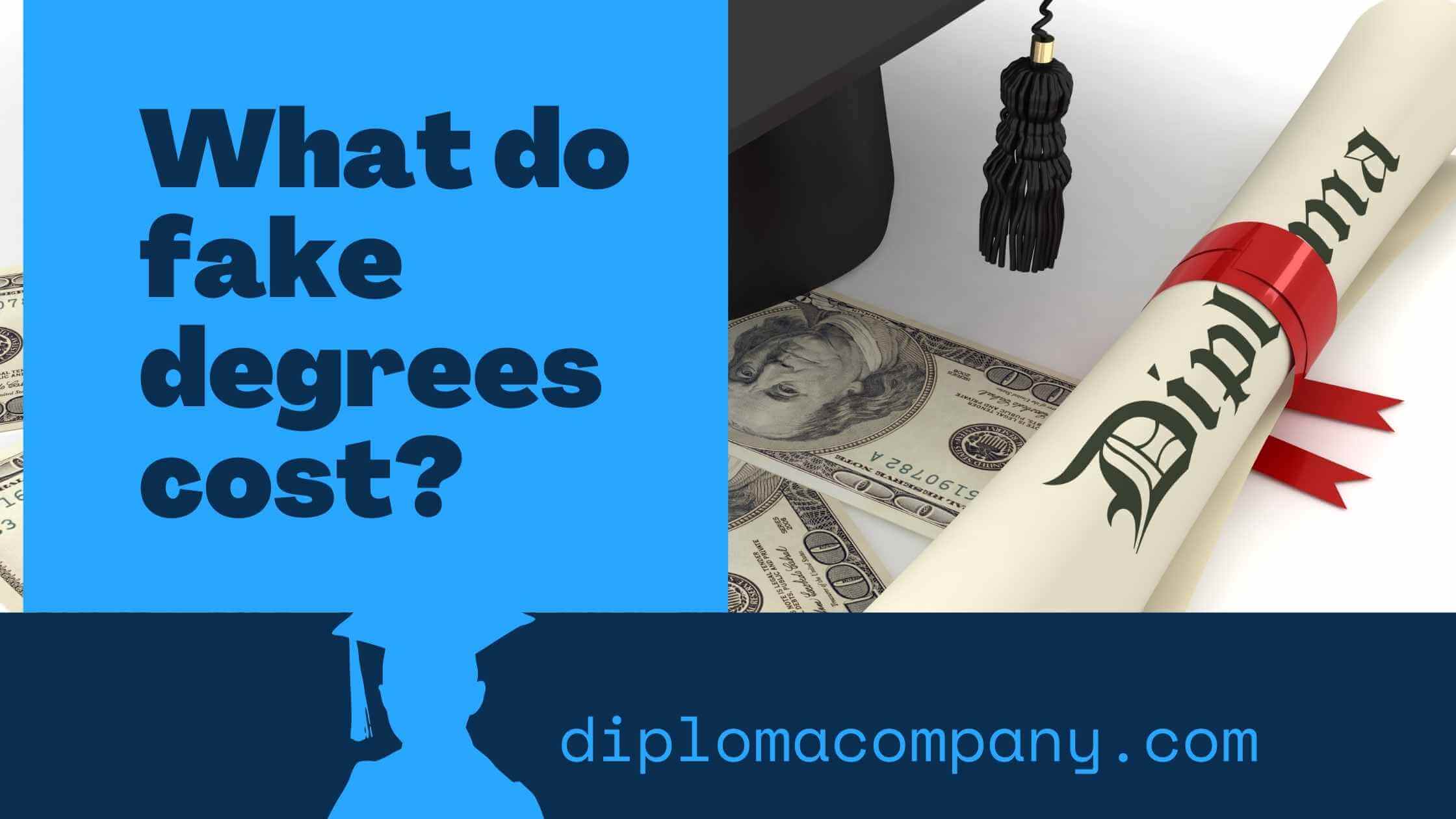
If you're exploring the option of purchasing a fake degree, you're likely wondering: How much does a fake degree cost? Prices can vary significantly based on various factors, such as the degree type, customization options, and quality. This article dives into the key elements that determine the cost of fake degrees and how you can make an informed decision when choosing a provider.
Average Cost of Fake Degrees
The price of a fake degree generally ranges from $150 to $600, depending on the type, complexity, and quality. Below is an overview of common degree types and their typical price range to help you get a better understanding of what to expect:
- : Typically priced between $150 to $190. These degrees offer excellent value for a custom-made diploma.
- : Expect to pay between $200 to $250 for a well-designed, realistic degree.
- : A master's degree with transcripts can range from $290 to $350, depending on the customization and additional features.
- : High-quality fake PhDs can cost between $400 to $600, with customization and additional features influencing the price.
It’s important to note that prices vary, and certain premium features like detailed transcripts, holograms, and embossed seals will add to the cost.
Factors Influencing the Cost of Fake Degrees
Understanding the factors that influence pricing is key to knowing why some degrees may cost more than others. Below are the main elements that affect the price of a fake degree:
1. Type and Complexity of the Degree
The complexity of the degree plays a significant role in pricing. Associate degrees tend to be simpler, while higher-level degrees such as master's or Ph.D.s require more intricate design work, making them more expensive. Adding elements like logos, signatures, and specific institutional details can also increase the cost.
2. Materials and Printing Quality
The quality of materials used to create the degree is another important factor. High-end print shops use premium paper, advanced printing techniques, and security features like holograms or embossed seals to ensure the diploma looks as authentic as possible. These investments in materials and equipment contribute to a higher price tag.
3. Supplier Reputation and Expertise
Reputable providers with a long track record of delivering high-quality diplomas often charge higher prices. These suppliers invest in skilled designers, modern printing equipment, and efficient shipping methods to provide customers with top-quality diplomas. A trusted provider ensures consistent quality and customer satisfaction, which justifies a slightly higher price.
4. Customization and Additional Features
Customization features such as specific university logos, embossed seals, and detailed transcripts can increase the cost of the degree. The more features you add, the higher the price tends to be. Custom degrees provide a more personalized, realistic product but come at an additional cost.
Additional Costs to Consider
Some providers may charge additional fees that could add up quickly. While you might encounter extra costs elsewhere, at DiplomaCompany.com, we prioritize simplicity and transparency. Here's what you can expect:
- No Proofing Fees: Unlike some providers, we don’t charge extra for previewing your degree before it’s finalized. Review your degree at no additional cost.
- Affordable Extra Copies: If you need more than one copy, we keep the cost of additional copies low to help you stay within budget.
- No Rush Fees: We process all orders promptly, and we do not charge additional fees for expedited services. What you see is what you pay.
- Free Shipping in the USA & Affordable International Delivery: Enjoy free ground shipping across the USA, and fast, low-cost delivery to over 200+ countries.
At DiplomaCompany.com, we aim to be upfront about all costs. There are no hidden fees, and our pricing is designed to be transparent and easy to understand.
Tips Tips for Getting the Best Deal on Fake DegreesGetting the Best Deal on Fake Degrees


While it's important to find a deal that fits your budget, value should be your main consideration. Here are a few tips for getting the best price without sacrificing quality:
- Look for Discounts or Promotions: Many providers, including us, run promotions or offer coupon codes that can save you a lot of money. It’s worth checking for these discounts before you make a purchase.
- Consider Timing Your Purchase: Prices can fluctuate throughout the year, and certain times of the year—like late summer or mid-winter—often offer better deals. If you’re flexible on timing, you could benefit from a seasonal discount.
- Bundle Your Degree with Transcripts: Bundle deals often come with significant savings. Many providers offer discounts of 20% or more when you purchase both a degree and transcript together, which can provide better value for your money.
Why Choose a Trusted Provider for Your Fake Degree
When purchasing a fake degree, it’s crucial to select a provider who delivers both value and quality. Here are some factors to consider when making your decision:
- Transparent Pricing: Look for companies that offer clear and upfront pricing, without any hidden fees.
- Quality Products: Make sure the provider uses high-quality materials and printing techniques for a realistic-looking diploma.
- Fast, Secure Shipping: Reliable delivery is essential. Choose a provider that offers secure shipping with tracking and reasonable delivery times.
- Customer Satisfaction: Reputation matters. A trusted provider should have positive reviews and testimonials from satisfied customers.
As a provider with over a decade of experience, DiplomaCompany.com offers competitive pricing and a commitment to delivering high-quality diplomas. Our pricing is transparent, and we ensure customer satisfaction through fast processing and secure delivery.
Ready to Purchase Your Fake Degree?
If you're ready to purchase a fake degree, it’s important to choose a reliable provider that offers quality and value. At DiplomaCompany.com, we’ve spent over a decade refining our processes to ensure you receive the best possible product for your needs.
Visit our store or contact us at 866-687-5403 to learn more or place an order. Let us help you find the perfect solution for your diploma needs!

